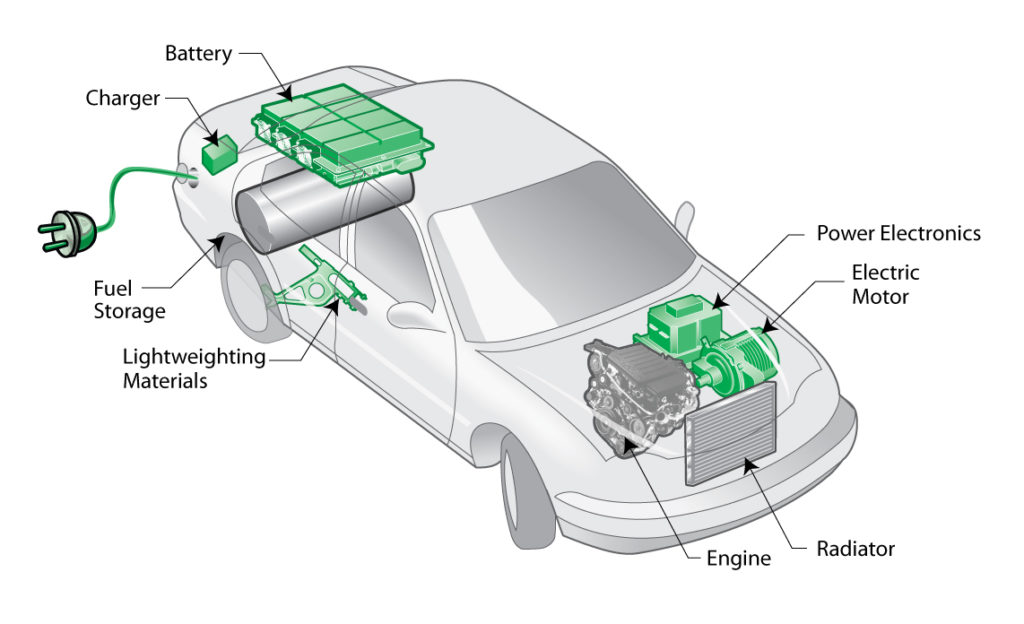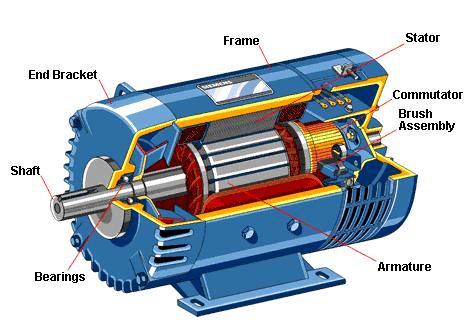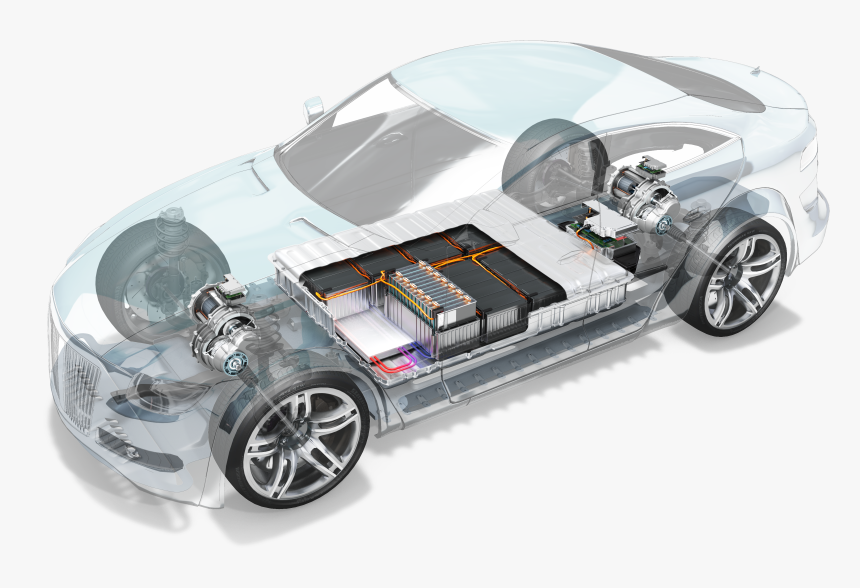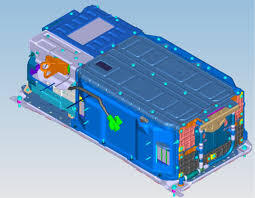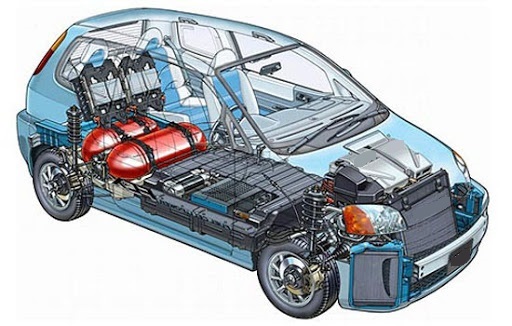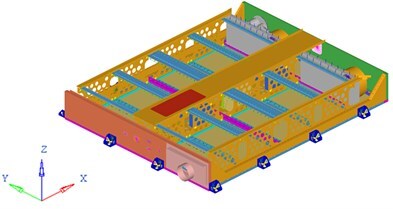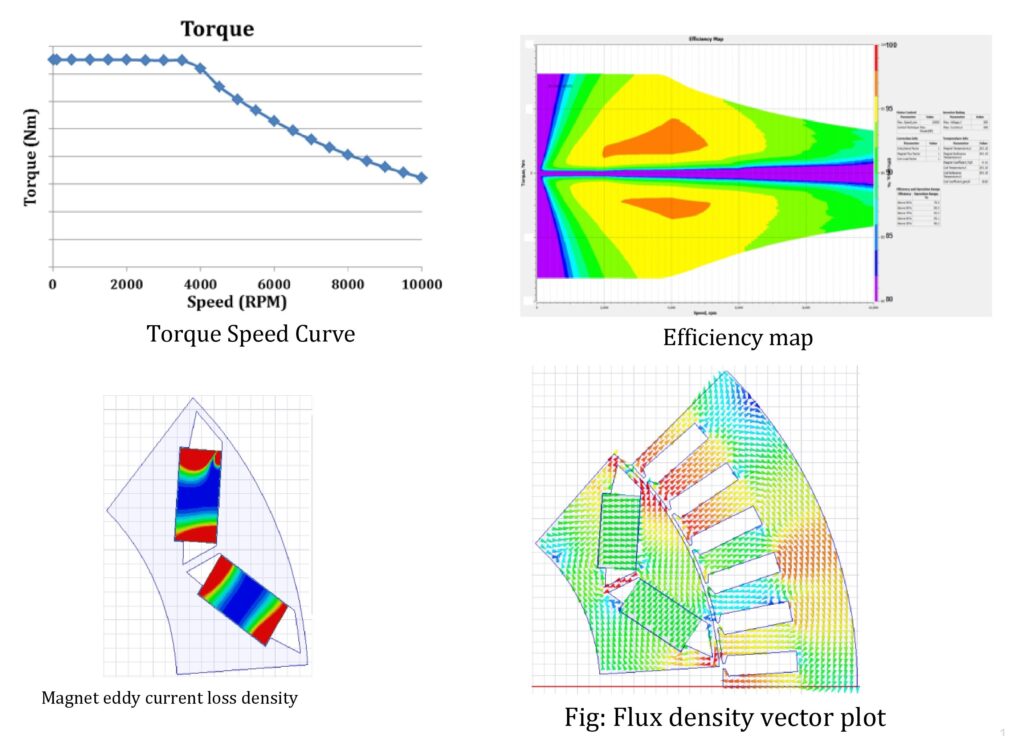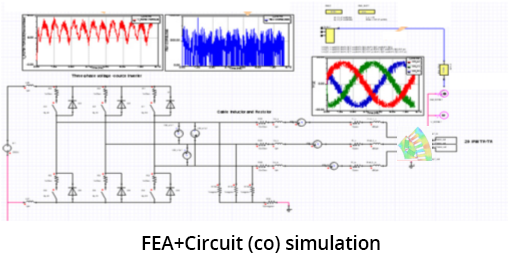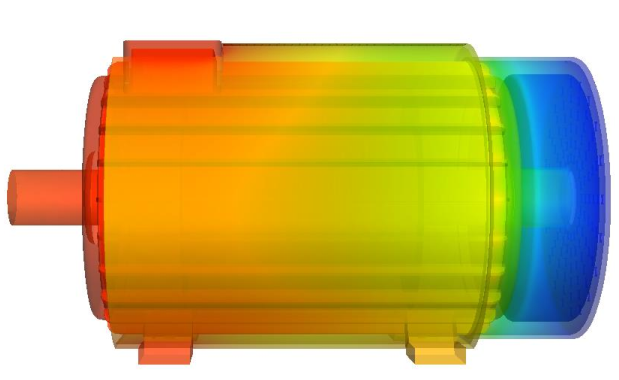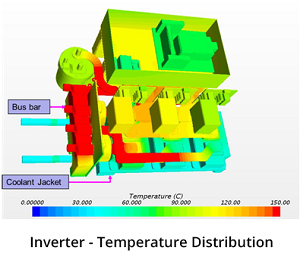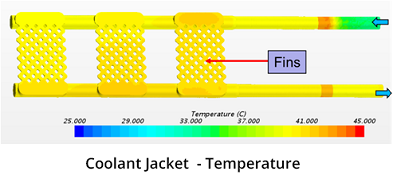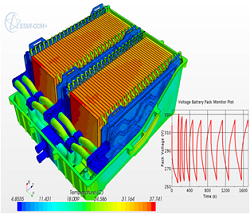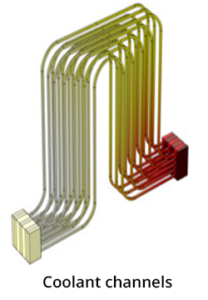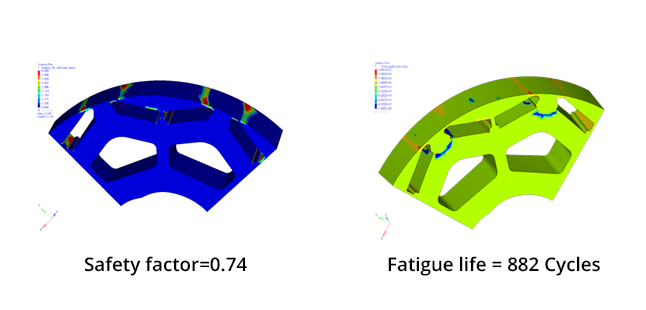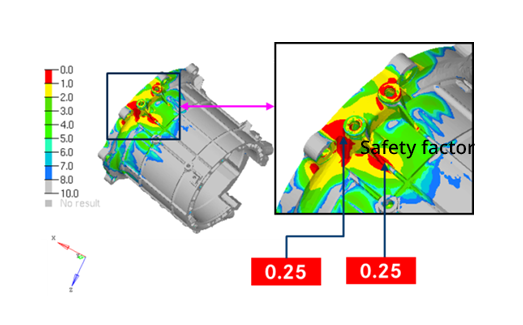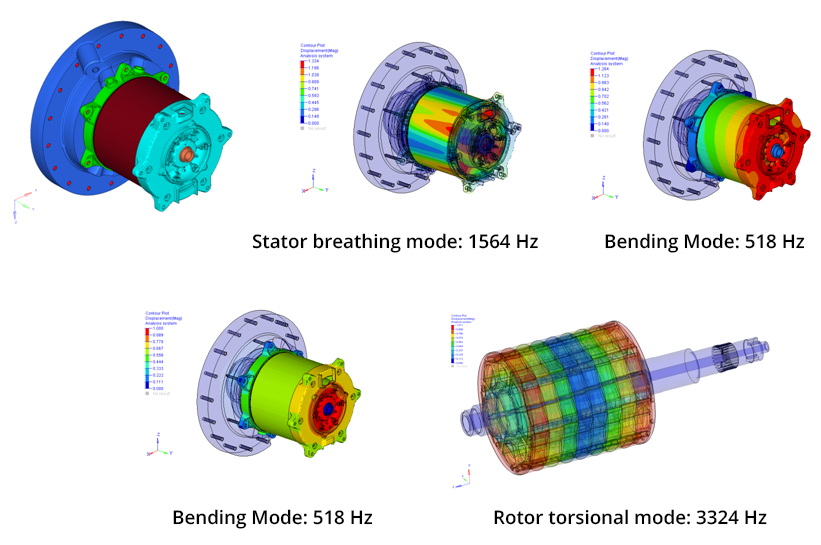
Given the increased concern over air pollution & petroleum supplies, the electrification of the automobile is well under way and accelerating every day. Because of the increasing reliance on electrical components and total complexity, as well as short design cycles, EV/HEV programs face numerous design issues. In addition, the automobile R&D department must analyse hundreds of thousands of design possibilities to handle structural, thermal, and electromagnetic design restrictions. All of the above needs are met by simulation technology, which serves as a major differentiator in the electrification battle of powertrain technology. DEP provides a variety of modelling tools for sophisticated EV/HEV powertrain designs with substantial performance and economy implications.
Battery System:
The performance and utility of clean energy mobility models such as Hybrid Electric Vehicles (HEVs), Battery Electric Vehicles (BEVs), and Plug-in Hybrid Electric Vehicles (PHEVs) are primarily determined by the performance and efficiency of the battery package that serves as the vehicle’s power source. DEP engineers have worked on a variety of vehicle and powertrain programs all over the world. They have access to test beds that help characterize battery systems, allowing them to improve performance and predict degradation.
DEP’s key capabilities:- Battery system modeling and analysis
- Cell level and stack level
- Battery system modeling and correlation with bench tests and IR imaging
- Battery characterization for degradation and performance prediction
- Complete battery system modeling and performance prediction for thermal and safety
- Battery thermal management / cooling system
- Battery electrochemical thermal modeling
- Battery CFD model
Motor System Design & Analysis:
Motors and power electronics module are critical parts of an electric vehicle propulsion. DEP engineers have expertise in thermal, mechanical and electromagnetic performance aspects of induction motors, and can support right from the stage of system requirements, till performance analysis and optimization, including reverse engineering and design support. Often this level of support involves working on co-simulation between FE level models and math models. DEP’s expertise in handling complete vehicle level programs help with due consideration to integration aspects.
DEP’s engineering support for Motor systems includes:- System requirements
- Motor design
- Motor reverse engineering and Benchmarking
- Motor electromagnetic performance
- Motor durability
- Motor thermal analysis
- Motor acoustics
- Math modeling and co-simulation
Integrated Drive Units:
Integrated Electric Drive units play a very important role in electric vehicle propulsion. This is a very compact unit that integrates motor, gear train and parking system. DEP engineers have experience working with the virtual validation of such systems from the durability, NVH, multi body dynamics and optimization aspects.
DEP’s services in the below section of Integrated drive units:- Modeling and structural analysis of complete drive unit
- Sub system level modeling, analysis and optimization of gear train
- Performance evaluation and optimization for parking system
- Electro-magnetic and electro mechanical aspects of motor
- Weight reduction of the entire module
Typical Analysis
Calculate induced voltage, load torque, cogging torque, inductance, flux linkage, losses (iron, copper, and magnet), parameter sensitivity, equivalent circuit model extraction, heat generation, temperature distribution, stress, vibrations, radiated sound, magnetization, demagnetization, and skew effects.
Electromagnetic Analysis
1. EV/HEV Traction Motor Simulation – As electric vehicles (EVs) become the mode of transportation of the future, a shift in thinking is required in the design process, which must begin from the ground up for the development of the motor/generator. From a performance standpoint, the electric motors’ power and efficiency are critical in allowing auto brands to outperform their competitors. DEP’s traction motor simulation is a perfect solution for today’s automotive engineers, who optimizes needs including efficiency, size & cost along with NVH, Reliability & Durability.
2. Coupled Control/Circuit Simulations – Building hardware is a great art that requires time and a lot of procedures & guidelines. But evaluating the machine model by connecting them to circuit models is the new extraordinary experience that DEP can provide. The circuit simulation process is an invaluable analysis tool that can replicate the behaviour of the actual device and in turn helping us to find the design efficiency long before the prototyping stage.
Thermal Analysis
1. Motor Thermal Analysis – Thermal design of electric machines makes them prone to problems such as insulation breakdown, reduction in torque provided, shortened lifetimes and so on. In order to develop smaller and more efficient electric motors, there is a necessity to carry out more thermal analysis in parallel with the traditional electromagnetic design. Designing motors need simulation tools that can be employed for quick, accurate product development.
Motor thermal analysis are done as follows:- 3D Induction motors analysis for mild hybrids
- 3D PM motor for full hybrid/ EV’s
- 1D AMESIM model for system simulation
2. Inverter Thermal Analysis – The reliability & durability of power electronic devices is uncontroversially dependent on operating temperature, which is related to loads and ambient conditions. Thermal analysis of inverters is a key process that can assist engineers to focus on energy efficiency from concept phases on. Designing of inverters involves coolant flow path design, material selection, arrangement of bus bars and power modules.
Our Inverter services includes:- Power module steady state thermal analysis
- Transient thermal analysis of power module for Thermal impedance and Time constants for the damage life estimation
- DC/AC bus bars coupled electric thermal analysis
- Component level thermal performance and Full inverters
3. Battery Thermal Analysis – The performance and utility of clean energy mobility models like Hybrid Electric Vehicles (HEVs), Battery Electric Vehicles (BEVs) and Plug-In Hybrid Electric Vehicles (PHEVs) primarily dependent on the performance and efficiency of the battery package which acts as the powerhouse for the above means of transport. Requirements and constraints for a battery change according to their application. Irrespective of varied scenarios a batteries performance and life span are always indicated by the temperature factor.
DEP’s analysis specifically covers:- Thermal abuses (over current)
- Pressure drop and Full CHT
- Sensing circuit analysis
- 1D AMESIM model for system simulation
Structural Analysis
1. Durability and Fatigue Analysis –– A key quality criteria for any product is its life expectancy. Fatigue and durability analysis involves time, since failures are progressive in nature, and depend on local stress scenarios, as well as the impact of working or fluctuating loads. DEP’s capabilities for lifetime assessment ranges from basic tools with simplified loading assumptions to advanced applications that target specialized engineering-analysis tasks. The basic fatigue and durability analysis done by DEP design engineers can provide an elaborate stress analysis to avoid under- or over-designing of products by simulating actual loading conditions and useful when comparing designs or design options. Eventually the test result states the service life until damage is sustained.
Automotive industry is now characterizing automobile design not only at the level of engine and drivetrain but as vehicle-passenger expectation & experience. With those footnotes, a number of disciplines including the Noise, Vibration, and Harshness (NVH) attribute is given extra care in the auto sector. Noise and vibration analysis needs a multi-disciplinary approach and a good understanding of mechanics, electronic measurement techniques, and sensor technology alongside signal analysis. DEP’s widespread knowledge and the proficient NVH testing team looks at the entire vehicle and reflects the numerical facts and figures on noise generated in terms of both air-borne and structure-borne grounds. With shorter lead times, DEP enables the manufacturers to gain a competitive advantage over other players

